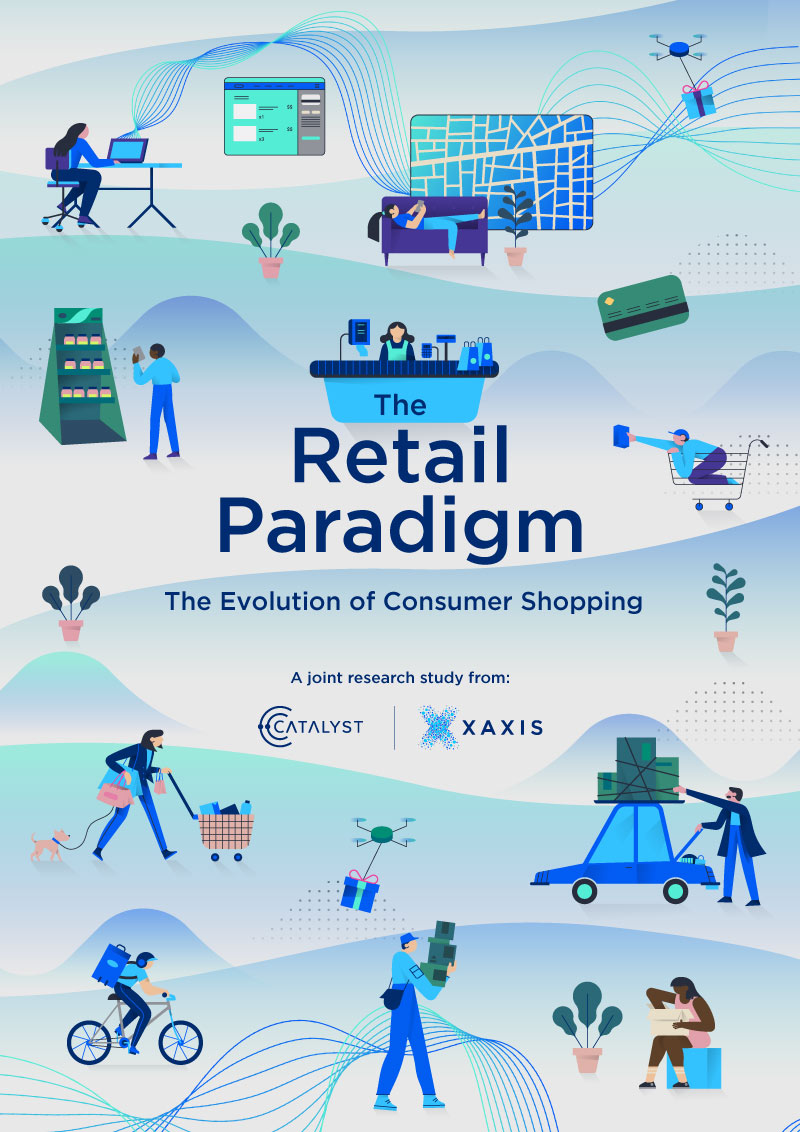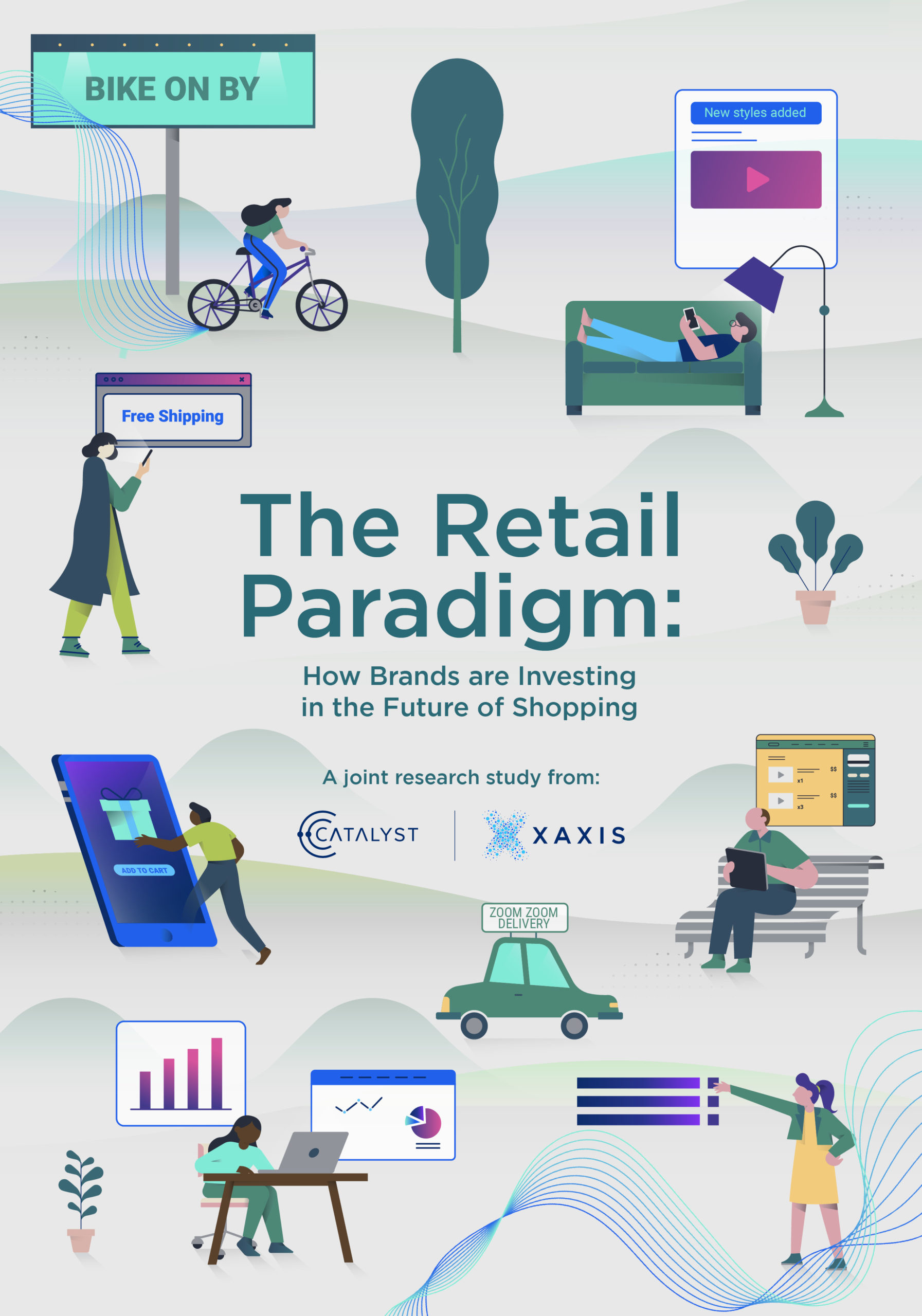Catalyst and Xaxis conducted a two-part original study – in partnership with London Research – to understand changes in consumer shopping and their impact for marketers. Part One looked at how shopping has evolved as the pandemic accelerated new consumer behaviors and market offerings. Part Two looks at how brands are responding, the barriers they face, and the further actions they need to take. Click below to access the full report now!
Part 1

Consumer shopping has evolved, but which habits are here to stay?
This study, based on a survey of 2000 consumers in the US, and interviews with a range of brands, agencies and retail platforms, examines how shifts in consumer shopping have been shaped by the pandemic. We examine what changes are here to stay as brands and platforms evolve their ecommerce, delivery and retail offerings to meet these changes. The takeaway– a retail paradigm.
Our findings show that the pandemic ushered in a new, shorter customer journey and everything is shoppable now that consumers are being driven by convenience and rapid-delivery services. According to GroupM research, global retail ecommerce will reach $6.2tn in 2022, and this will only continue to expand now that the largest retailers in the world have captured the attention of younger shoppers (ages 18-34). Download Part 1 of The Retail Paradigm to understand the motivations behind these findings alongside additional insights into receptivity to advertising, brand loyalty, and the changing consumer journey.
Part 2

A new retail paradigm has emerged. How are brands and marketers evolving their investment and marketing strategies in the new era of shopping?
The rise of e-commerce accelerated by the pandemic, the impending demise of the third-party cookie, the growth of retail media, and the cost-of-living crisis are just four of the forces driving the emergence of a new relationship between shoppers, retailers, and brands.
This report – the companion piece to Part One: The Evolution of Consumer Shopping – is based on a survey of 333 U.S. marketers working for brands and agencies. It also includes insights from a range of individuals working for brands, agencies, and retail platforms, and it draws on the findings from a survey of 2,000 consumers carried out in March 2022 for Part One.
The main finding of this study is that marketers have embraced advertising on e-commerce sites and are investing in their use of retailers’ data for offsite targeting, with the added bonus of mitigating the disappearance of third-party cookies.
PUTTING THINGS SIMPLY:
- Shoppers want simplicity, convenience, and better offers.
- Brands want to build closer relationships with shoppers based on their growing data footprint but are challenged by fragmentation of touchpoints.
- Retailers want to capitalize on advertising and media investments as a revenue source after seeing their partners and competitors succeed.
- There is a convergence of shopper and commerce strategies happening, powered by the rise of retail networks and DSPs, and most brands (77%) have created new marketing budgets AND shifted budgets (73%) to support ecommerce media investment.
- The full potential of this new ecosystem has yet to be realized as it is rapidly evolving and still in its early stages, but brands must have conversations with their agency and retail partners now to build understanding and strategies for both short- and long-term success.
ADDITIONAL DATA & KEY FINDINGS:
- Single-platform customer journeys are answering the changing needs of brands, retailers, and shoppers. More than half of U.S. consumers (51%) now say their online purchasing journey most often starts on ecommerce/retail sites.
- The pandemic-driven acceleration of growth in ecommerce has increased the retail media opportunity dramatically over the last two years. According to GroupM research, global retail ecommerce will reach $6.2tn in 2022.
- The impending demise of the third-party cookie has led to a scramble within the online advertising industry for a replacement, and attention has focused on first-party data and leading many brands to experiment with D2C offerings.
- Retail Media is significantly ahead of all other channels except social media in terms of marketing budget growth this year. And the increased spend on social can be at least partly attributed to retail media. Shoppable media–the ability to click on a link in a social post, web page, or video and be taken to a pre-filled e-commerce basket–is another area that is booming.
- Marketers are responding to consumers’ ‘fluid and flexible’ approach to shopping by increasingly moving to outcome-based budgeting and focusing on what works. The risk here is that short-term performance tactics are easier to measure than long-term brand-building, exacerbating the drift away from brand marketing, which remains essential for long term success.
- The strategic importance of retail media, combined with the complexity of the retail media ecosystem, increases the reliance of brands on their agency partners for guidance and investment in this emerging space.
- Three-quarters of brands recognize that retail media is shortening the customer journey and changing the role of search. However, they have yet to fully capitalize on the implications of these changes, especially in the way retail media can directly link advertising to purchase. Greater understanding will undoubtedly lead to greater investment.



